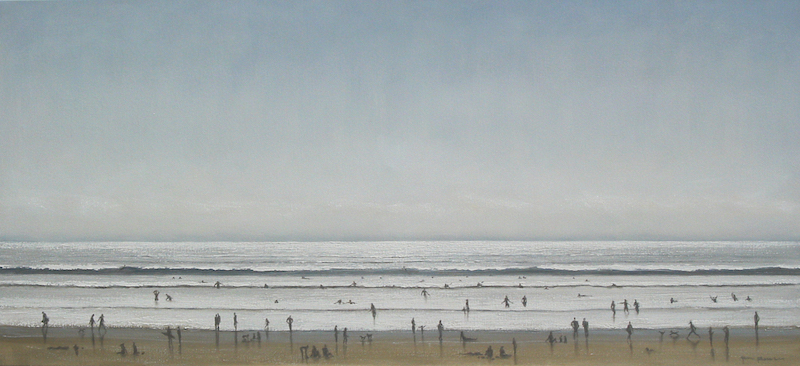There is something soft and comforting about the rhythms of artist Jane Flowers’ works, her adept handling of oil paint perfectly capturing the play of light across waves, dunes and sand. The world she captures is one of balance, her aesthetic sensibilities attracted to patterns of landscape and the pulse of life.
Much of her oeuvre is populated by seascapes, the audience provided a view across sea and sand. Waves naturally arrive on shore in steady lines, their frothy crests demarking a soothing series of lines that climb up the canvas. The constancy of the laws of nature are reflected also in her human subjects, who have joined the audience to embrace the serene patterns of the surf.
Often seeing ourselves outside the natural world, here we can see that humans follow the same rules, distancing themselves equally across the beach to best appreciate its splendour. The strong horizontal lines of waves are balanced by tiny silhouetted figures, who sun themselves and play in their own unique patterns.
Flowers’ ability to capture these patterns – the flow of water, the behaviour of humans – provides her audience with a window on the elegance of nature and the harmonies between man and the natural world.
Above: Jane Flowers, Beachscape with Figures, 2020. Oil on canvas, 90 x 200cm. Courtesy: the artist.

Jane Flowers, Bathers Indian Ocean, 2012. Oil on canvas, 84 x 183cm. Courtesy: the artist.

Jane Flowers, The Joy
of Summer, 2012. Oil on canvas, 86 x 190cm. Courtesy: the artist.

